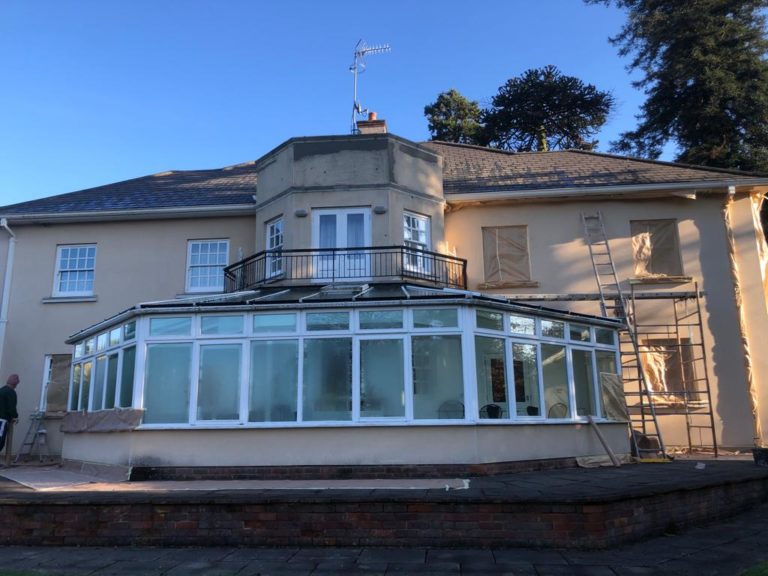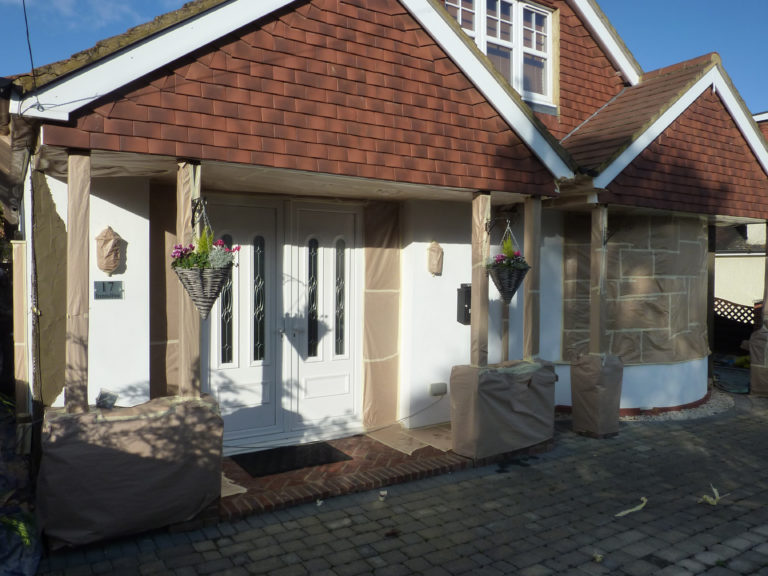EWI (External wall insulation) improves thermal performance, reduces energy consumption (and thus lowers energy costs), and updates the looks of a home by installing insulation on the outside of the structure. EWI systems are constructed in layers. The insulating board itself might be several distinct types, which are best suited to individual projects and their needs. Here’s a more in-depth look at the alternatives.
Following the installation of the boards on the wall, a system is constructed using numerous coats, which include:
- Primer
- Reinforcement Mesh
- Rendering
- Render with a decorative finish or a top coat
You can also go for a brick-effect finish to maintain your home’s traditional character.
There’s no requirement to move out in the renovations because everything is done outside. EWI also prevents interfering in plumbing or electrics as opposed to internal insulation.
Thermal Bridging is Reduced
Insulating exterior of your home functions as a protective layer for your property. From a thermal standpoint, it’s preferable to insulation from the inside because it allows for complete insulation with no or little thermal bridges. It also protects the exterior from severe weather and maintains the building’s thermal inertia, which is crucial for summer comfort. Finally, insulating from the exterior ensures porosity, which allows for considerably better humidity control in the home.
A Higher-Value, High-Performance Construct
It’s crucial to think about the long-term influence of your renovations on your home’s value. Potential buyers will be attracted not only to the home’s design but also to the fact that it is energy efficient and also has minimal heating costs. A thermally efficient and well-insulated property is more appealing to potential purchasers, so investing in the home will surely pay off over the long term.

Makes a Home More Appealing
Adding EWI to the house is also a terrific way to make it look new again.
There are several extensive selections of low-maintenance and long-lasting ornamental finishes for you to choose from in the market. If you choose a painted finish, you can choose from over 100 different colours. There are brick-effect finishes for a traditional aesthetic and pebble dash in a variety of colour options if you’ve been looking for a more sturdy surface. Mineral renderings are also available, which can be utilised to produce architectural features like quoins and ashlars.
Reduce Condensation and Damp
Insulation inhibits heat transfer by keeping heat inside the walls; condensation happens when hot air meets cold walls. Condensation is significantly decreased with EWI since the property’s outer walls are warmer, helping to improve indoor air quality and protect structural integrity.
Increasing the Fabric’s Lifespan
External wall insulation encases a property’s whole outside in a thermal blanket, which reduces heat loss and shields the building fabric from weathering. The system’s external render protects the property by serving as a weather-proof barrier, avoiding water infiltration and harm from extreme weather.
Summers are Cooler, and Winters are Warmer.
Insulation, which is based on the concept of thermal comfort, not only keeps your house warm during the winter and keeps it from overheating in the summer. EWI improves the property by guaranteeing that the heat produced by your central system of heating stays within the building also while preventing cold air from entering. The opposite is true in the summer: the walls don’t really absorb the heat that the sun radiates and so do not convey it into the property. During the summers, wood fibre insulation is a high-performance substance for keeping a cool indoor temperature.
Reduced Energy Bills and Energy Savings
Did you also know that a house that is under or improperly insulated can lose anywhere from 20% to 30% of its energy? You might waste energy by having air leaks near your doors and windows and in your basement or attic. That means your heating and cooling systems will have to work more to keep your home warm or cold (and a HVAC system that has harder-working means a higher energy bill). You can keep your house efficient and your energy expenses low by using effective home insulation.
Energy expenditures can be drastically decreased by ensuring that heat is retained within your home. When 90mm of EPS is installed onto a solid brick wall, a four-bedroom detached house may expect to save £455 per year on energy expenditures. Insulating external wall is cost-effective.

Carbon Footprint Reduction
Most individuals are unaware that their consumption is directly tied to their carbon footprint, which is defined as the quantity of carbon dioxide and other compounds of carbon emitted as a result of a group’s, person’s, or organisation’s use of fossil fuels—returning to the topic of the energy grid and lowering your consumption. Domestic electricity use in the United States would decline by roughly 5% and natural gas use by even more than 10 percent if all homes were insulated, according to the International Energy Conservation Code (IECC).
Health Advantages
The immune system has been shown to be suppressed by lower temperatures. We don’t wear shorts and t-shirts when going outside in the depths of winter. We put on our winter coats! Staying in a cold environment raises your chances of becoming ill, and if it’s constantly cold where you live… Well, you get the picture.
Conclusion
Insulating your home can help you save money on energy, reduce the emission of CO2, and improve your comfort. To figure out which portions of your home are problematic, undertake a home energy audit to tell you how well insulated the house is. It’s time for a Home Energy Audit and to choose home insulation if you’re continuously asking yourself, “Why do you constantly turn up the heat if it doesn’t do anything?” or “Why do the floors and rooms in your house have different temperatures?”









